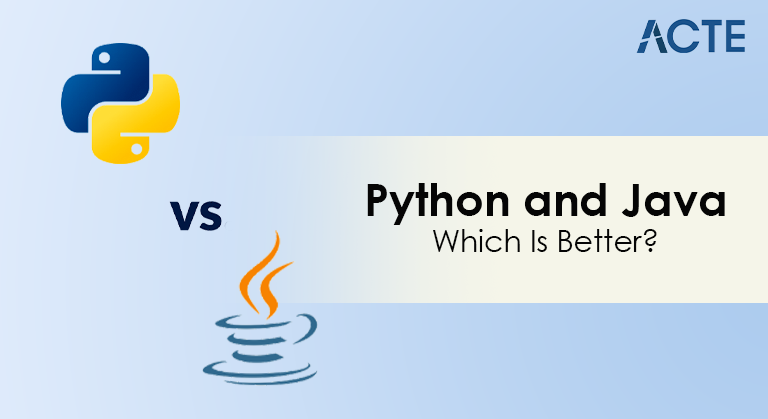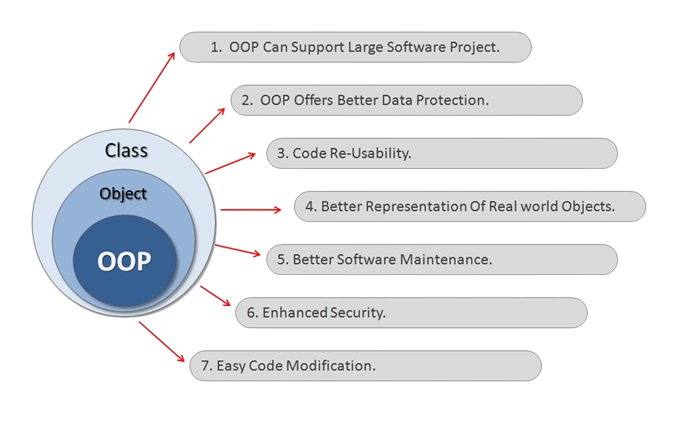
- Introduction to Python and Java
- Language Design Philosophy and Syntax
- Compilation vs Interpretation
- Performance and Execution Speed
- Memory Management and Garbage Collection
- Object-Oriented Programming Support
- Library Ecosystem and Frameworks
- Conclusion
Introduction to Python and Java
Python and Java are two of the most popular and widely adopted programming languages globally. Both have stood the test of time and are favored by beginners, intermediate developers, and seasoned professionals alike. They cater to a wide range of applications, including web development, data analysis, machine learning, enterprise software, and mobile apps. Their ecosystems are mature, community support is strong, and they both offer excellent documentation, tooling, and career opportunities. While Python is renowned for its simplicity and rapid development capabilities, Java is celebrated for its robustness and scalability Python Training. In this article, we will explore the differences between Python and Java across several key factors to help you decide which one aligns with your goals and use cases. Python and Java are two of the most widely used programming languages today, each with its unique strengths and applications. Python is known for its simplicity, readability, and versatility, making it popular among beginners and experienced developers alike. It is extensively used in web development, data science, automation, and artificial intelligence. Java, a statically typed, object-oriented language, is favored for building large-scale enterprise applications, Android development, and high-performance systems Average Annual Salary of a Python . Both languages have strong communities, rich ecosystems, and powerful libraries, making them essential tools in modern software development. Choosing between them depends on project needs and developer preferences.
Do You Want to Learn More About Python? Get Info From Our Python Online Training Today!
Language Design Philosophy and Syntax
Python is built on the philosophy of code readability and simplicity. Its clean and concise syntax resembles pseudocode, which significantly lowers the learning curve for beginners. Python promotes rapid development and is often the first language taught in programming courses due to its intuitive structure.
Example (Python):
- for i in range(5):
- print(“Hello, Python”)
Java, in contrast, follows a more verbose and structured syntax. It was designed with object-oriented principles from the ground up. While this can make Java more challenging for beginners What is pip , it provides clarity and strong architectural enforcement in large-scale systems.
Example (Java):
- for(int i = 0; i < 5; i++) {
- System.out.println(“Hello, Java”);
- }
While Python emphasizes developer productivity through simplicity, Java’s rigidity is beneficial for teams maintaining large codebases.
Compilation vs Interpretation
- Java is a compiled language that uses the Java Virtual Machine (JVM) to run bytecode, allowing platform independence.
- Python is an interpreted language that executes code line-by-line, Python Serialization enabling quick testing and development.
- Java’s compilation step improves performance and catches errors before runtime.
- Python’s interpretation offers flexibility and ease of debugging but can be slower in execution.
- Java code must be compiled before running, while Python code is typically run directly by the interpreter.
- Both languages use Just-In-Time (JIT) compilation techniques to enhance runtime speed.

Performance and Execution Speed
Java often outperforms Python in terms of raw execution speed. It is designed for high-performance applications and benefits from JVM optimizations like HotSpot and JIT compilation. Python is slower due to its interpreted nature and dynamic typing. However, in real-world use cases, Python’s speed is often sufficient, and performance can be enhanced with extensions written in C or by using frameworks like NumPy and Cython. In performance-critical applications such as financial systems, game engines, or real-time processing tools, Java may be preferred. For scripting, automation, Best Python IDEs and Code Editors or data science tasks, Python’s performance trade-offs are usually acceptable. Java generally outperforms Python in terms of raw execution speed due to its compiled nature and optimized Java Virtual Machine (JVM). Java code is compiled into bytecode, which runs efficiently across platforms with just-in-time (JIT) compilation, resulting in faster execution and better memory management. Python, being an interpreted language, executes code line-by-line, which can make it slower, especially for CPU-intensive tasks. However, Python’s speed limitations can often be mitigated using optimized libraries like NumPy or integrating with compiled languages. Overall, Java is preferred for high-performance applications, while Python offers rapid development and flexibility at some cost to speed.
Want to Pursue a Python Master’s Degree? Enroll For Python Master Program Training Course Today!
Memory Management and Garbage Collection
Both languages offer automatic memory management and garbage collection, but with differing strategies. Java uses a generational garbage collection model within the JVM, where memory is divided into young, old, and permanent generations. Developers can fine-tune garbage collection behavior for performance, especially in large-scale systems. Python employs reference counting combined with a cyclic garbage collector. While simple, this approach can struggle with complex object graphs or large-scale concurrent Python Training applications. However, it suffices for typical use cases involving scripting and automation. Both Python and Java manage memory automatically through built-in garbage collection, freeing developers from manual memory allocation and deallocation. Java uses a sophisticated garbage collector within the JVM that tracks object references and reclaims memory from unused objects efficiently, supporting features like generational and concurrent garbage collection. Python relies on reference counting combined with a cyclic garbage collector to handle memory cleanup, which works well for most applications but can struggle with complex reference cycles. While Java’s garbage collection is highly tunable for performance-critical applications, Python’s memory management emphasizes simplicity and ease of use.
Object-Oriented Programming Support
- Both Python and Java are fully object-oriented languages supporting classes and objects.
- Java enforces strict OOP principles with mandatory class-based structure.
- Python supports OOP but also allows procedural and functional programming styles Building a Career as a Python Developer .
- Java requires explicit declaration of access modifiers like public, private, and protected.
- Python uses naming conventions for access control but lacks strict enforcement.
- Both languages support inheritance, polymorphism, and encapsulation.
- Java supports interfaces and abstract classes for defining contracts.
- Python uses abstract base classes and multiple inheritance more flexibly.

Library Ecosystem and Frameworks
Python has a vast and growing library ecosystem, especially strong in data science, AI, web development, and automation. Key libraries include:
- Data Science: NumPy, pandas, scikit-learn, TensorFlow
- Web Development: Django, Flask, FastAPI
- Automation: Selenium, PyAutoGUI
- DevOps: Ansible, Fabric
- Web Applications: Spring, Hibernate, Struts
- Mobile Apps: Android SDK
- Enterprise: Java EE, Maven, Gradle
- Game Development: LibGDX, jMonkeyEngine
Java also boasts an extensive ecosystem, Python Developer Skills especially in enterprise software:
While Python focuses on rapid development and scripting, Java frameworks offer deep integration, scalability, and security, particularly suited for enterprise-grade applications.
Preparing for a Python Job? Have a Look at Our Blog on Python Interview Questions and Answers To Ace Your Interview!
Conclusion
In summary, both Python and Java are powerful, widely-used programming languages, each excelling in different areas. Python’s simplicity, readability, and flexibility make it ideal for rapid development, scripting, data science, Object-Oriented Programming and AI applications. Java’s strong typing, performance, and robust ecosystem suit large-scale, enterprise-level software and Android development Python Training. Your choice between Python and Java should depend on your project requirements, performance needs, and development goals. Understanding their differences in design, execution, and application domains helps you select the right tool to deliver efficient and maintainable software solutions.


